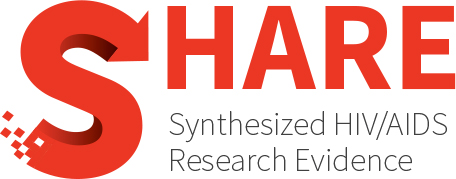Category Archives: Linkage/engagement in care
Measuring mobility in HIV research in sub-Saharan Africa: A scoping review
INTRODUCTION: Mobility-from overnight travel to permanent migration-can reduce service access and increase HIV risk, driving the epidemic in sub-Saharan Africa (SSA). This scoping review described mobility measures used in HIV...
HIV, hepatitis, and syphilis self-testing among adolescents and young adults: A systematic review and meta-analysis
Background: Adolescents and young adults (AYA) make up a significant share of the world’s burden of HIV and other sexually transmitted infections (STI). Self-testing can increase testing coverage and strengthen the...
Technology-assisted interventions in the delivery of HIV prevention, care, and treatment services in sub-Saharan Africa: Scoping review
BACKGROUND: Sub-Saharan Africa (SSA) accounts for up to 67% of the global HIV burden yet grapples with health system challenges like distant health facilities, low doctor-to-patient ratio, and poor or...
The role of digital tools in enhancing antiretroviral therapy adherence among adolescents and young adults with HIV: A systematic review of randomized controlled trials
Background: Adolescents and Young Adults (AYA) face challenges in maintaining antiretroviral therapy (ART) adherence, necessitating the need for targeted and innovative interventions. Digital tools have shown potential in improving ART adherence...
Exercise interventions conducted among individuals with co-occurring HIV and unhealthy substance use: A systematic review
Unhealthy substance use and physical inactivity are prevalent co-occurring risk factors for morbidity and mortality among people with HIV (PWH). Evidence-based exercise interventions targeting both risk factors are limited. We...
Impacts of the COVID-19 pandemic on the HIV care continuum and associated factors in high-income nations: A mixed-methods systematic review
The COVID-19 pandemic has significantly impacted the HIV care continuum (HCC), presenting challenges while also driving positive transformations globally. This study examines the impact of the COVID-19 pandemic on HCC...
Impact of HIV-related stigma on antiretroviral therapy adherence, engagement and retention in HIV care, and transition to adult HIV care in pediatric and young adult populations living with HIV: A literature review
Abstract HIV-related stigma is associated with negative effects on mental health and lower health-related quality of life in pediatric and young adult populations living with HIV. We reviewed literature on...
